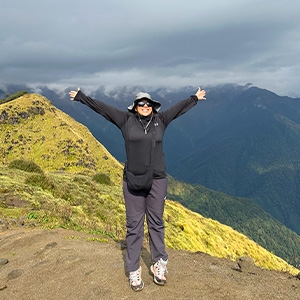Origin and History of Nepalese New Year
The Nepali New Year, also known as "Nava Varsha" has its origins deeply rooted in ancient history, intertwined with the cultural and religious heritage of Nepal. The first day of Baisakh month from Hindu Calendar System- the Bikaram Sambat or Bikram Era, marks the New Year in Nepal.
The mythological Vikramaditya, who governed the Indian subcontinent in antiquity, created the Bikram Sambat calendar. Based on historical mentions this calendar system had been initiated by Emperor Vikramaditya somewhere in the first century BCE, however the exact date remains unknown. This calendar system is roughly 56 years and 7 months ahead of the widely used solar Gregorian calendar in the West, known as BCE (Before Common Era).
The origins of Bikram Sambat are shrouded in legend and mythology, with various myths attributing its establishment to different rulers and periods. However, it is widely accepted that Bikram Sambat was introduced to Nepal during the reign of King Vikramaditya, from whom the calendar system originates.
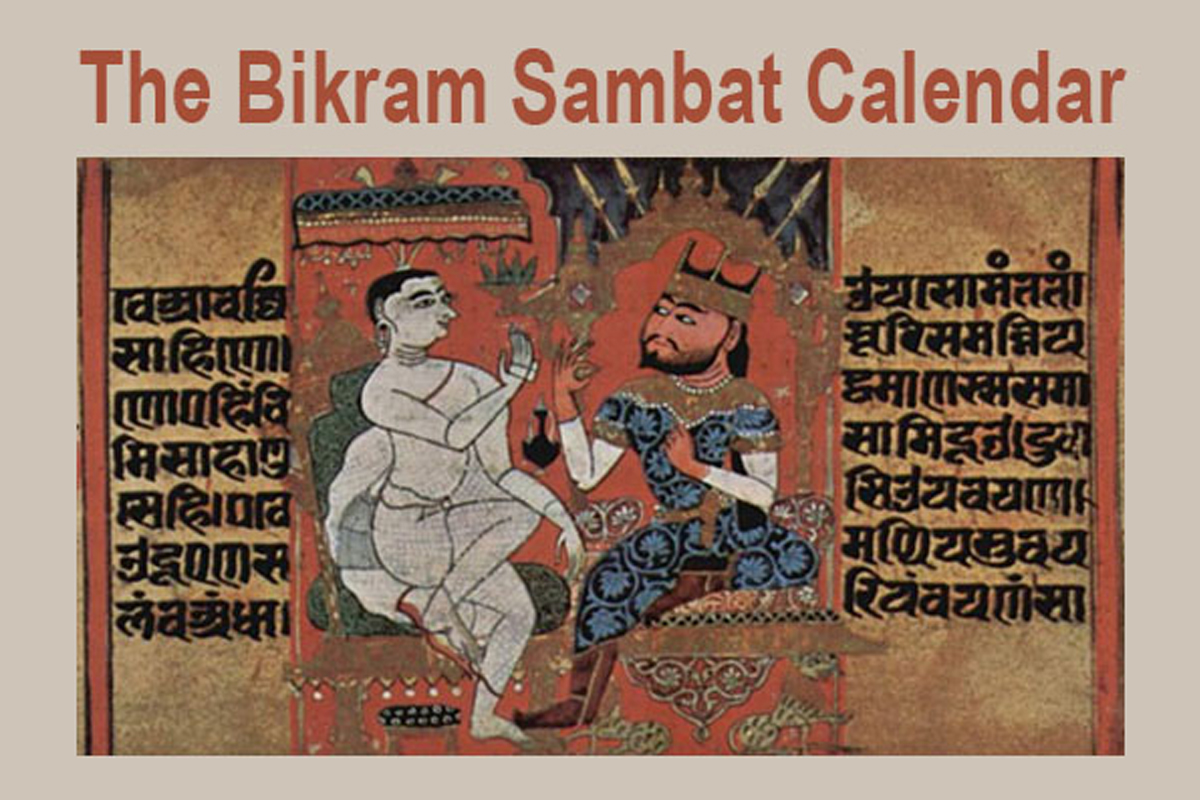
The Nepali New Year falls on the first day of the month of Baisakh, which usually corresponds to mid-April in the Gregorian calendar. This timing holds both astronomical and agricultural significance, marking the onset of spring and the beginning of the harvest season in Nepal.
Historically, the celebration of Nepali New Year has been deeply ingrained in the social and religious foundation of Nepali society. It serves as a time for renewal, reflection, and celebration, symbolizing the transition from the old to the new and the hope for a prosperous year ahead.
Throughout history, Nepali New Year celebrations have evolved, incorporating elements from various cultural and religious traditions. Today, the festivities are marked by a blend of ancient rituals, colorful customs, and communal gatherings, showcasing the cultural diversity and unity of the Nepali people.
When is Nepali New Year Celebrated?
Nepali New Year, also known as "Nava Varsha" is typically celebrated on the first day of the month of Baisakh in the Bikram Sambat calendar. This corresponds to mid-April in the Gregorian calendar. The exact date may vary slightly each year due to differences in lunar and solar calendars, however, this year, the Nepali New Year 2082 falls on 14th April, 2025.
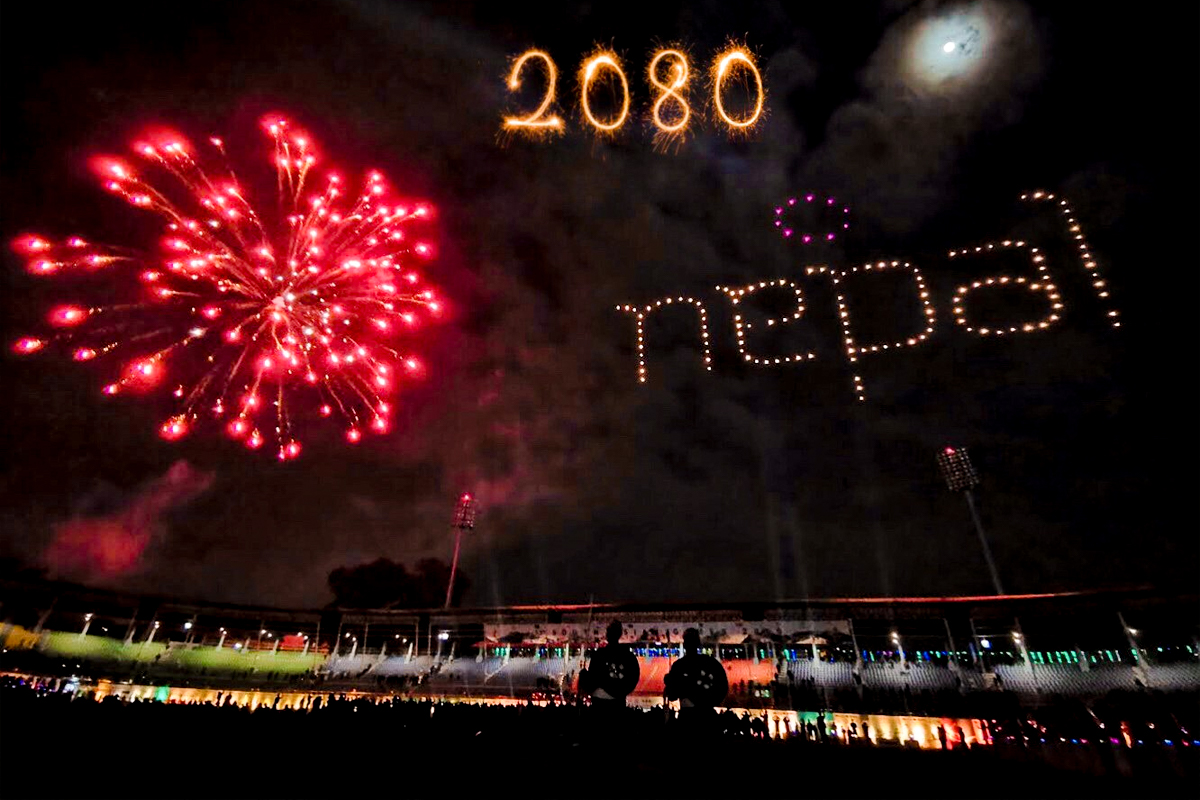
Here are the names of the 12 months of the Nepali Year according to the Nepali Patro:
- Baishakh: 30-31 days (Mid-April to Mid-May)
- Jestha: 31-32 days (Mid-May to Mid-June)
- Ashad: 31-32 days (Mid-June to Mid-July)
- Shravan: 31-32 days (Mid-July to Mid-August)
- Bhadra: 31-32 days (Mid-August to Mid-September)
- Ashwin: 30-31 days (Mid-September to Mid-October)
- Kartik: 29-30 days (Mid-October to Mid-November)
- Mangsir: 29-30 days (Mid-November to Mid-December)
- Poush: 29-30 days (Mid-December to Mid-January)
- Magh: 29-30 days (Mid-January to Mid-February)
- Phalgun: 29-30 days (Mid-February to Mid-March)
- Chaitra: 30-31 days (Mid-March to Mid-April)
Significance of New Year in Nepal
The Nepali New Year holds profound cultural and historical significance for the people of Nepal. Originating from the Nepal Sambat calendar, which began in 1028 AD, the New Year is deeply intertwined with the country's rich heritage and traditions. Its deep connection to the reign of Emperor Vikramaditya underscores its historical importance, linking it directly to the Bikram Sambat era.
For Nepali people, the New Year represents a time of renewal and hope, where past hardships are left behind, and the promise of joy and prosperity in the upcoming year is embraced. This period signifies purification and freshness, symbolizing a clean slate and fostering a sense of new beginnings and enthusiasm among the populace.
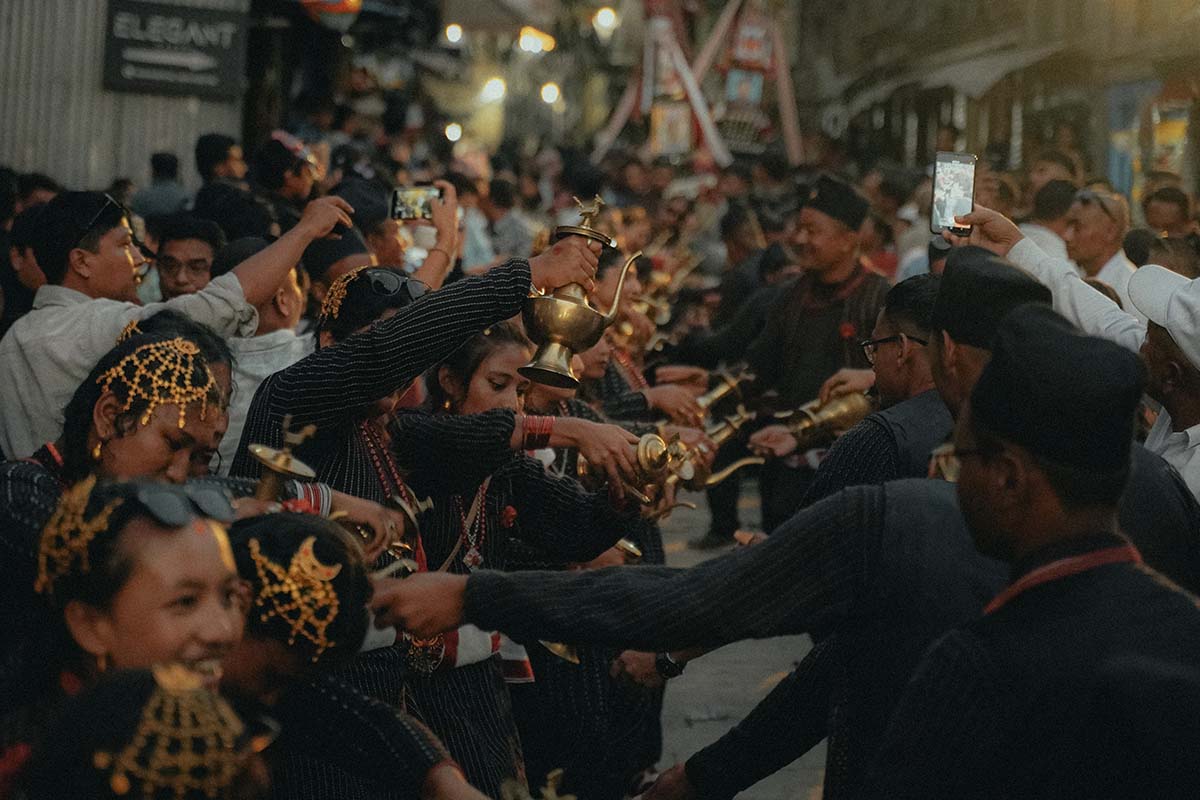
The celebration of Nepali New Year is not only limited to the calendar change but also includes various festivities and cultural events. One such event is the Bisket Jatra, predominantly celebrated by the Newari community in Nepal. This vibrant festival, held in Bhaktapur city, seeks streets filled with revelers indulging in feasting, drinking, and participating in chariot pulling, embodying the spirit of communal joy and togetherness.
Moreover, the Nepalese government also grants public holiday during this time, allowing people to fully immerse themselves in the festivities and cultural rituals. This further emphasizes the importance and widespread observance of the New Year across the country.
How to experience Nepali New Year as a Tourist?
For tourists visiting Nepal during the New Year, it presents a unique opportunity to experience the country's cultural richness and join in the celebratory atmosphere. From witnessing traditional rituals to partaking in festive gatherings, tourists can engage in a truly immersive cultural experience, gaining insight into Nepal's customs and traditions firsthand. Whether exploring bustling city streets or participating in local festivities, celebrating the Nepali New Year as a tourist offers a memorable and enriching experience, forging connections with the country's vibrant culture and its warm-hearted people.
As a tourist, you too can immerse yourself in the New Year Celebrations in Nepal and create unforgettable memories. Here's how:
- Visit Temples: Begin your New Year journey by visiting the numerous temples and monasteries scattered across Nepal. Join the locals in seeking blessings and partake in the prayers and rituals. Experience the adorned temples and witness traditional dances while indulging in local delicacies.
- Experience Bisket Jatra Festival: Dive into the heart of Nepali culture by participating in the exhilarating Bisket Jatra Festival. Delight in the traditional Newari cuisine, revel in the local songs and dances, and witness the majestic chariot procession. Be cautious in the bustling crowds while soaking in the vibrant atmosphere.
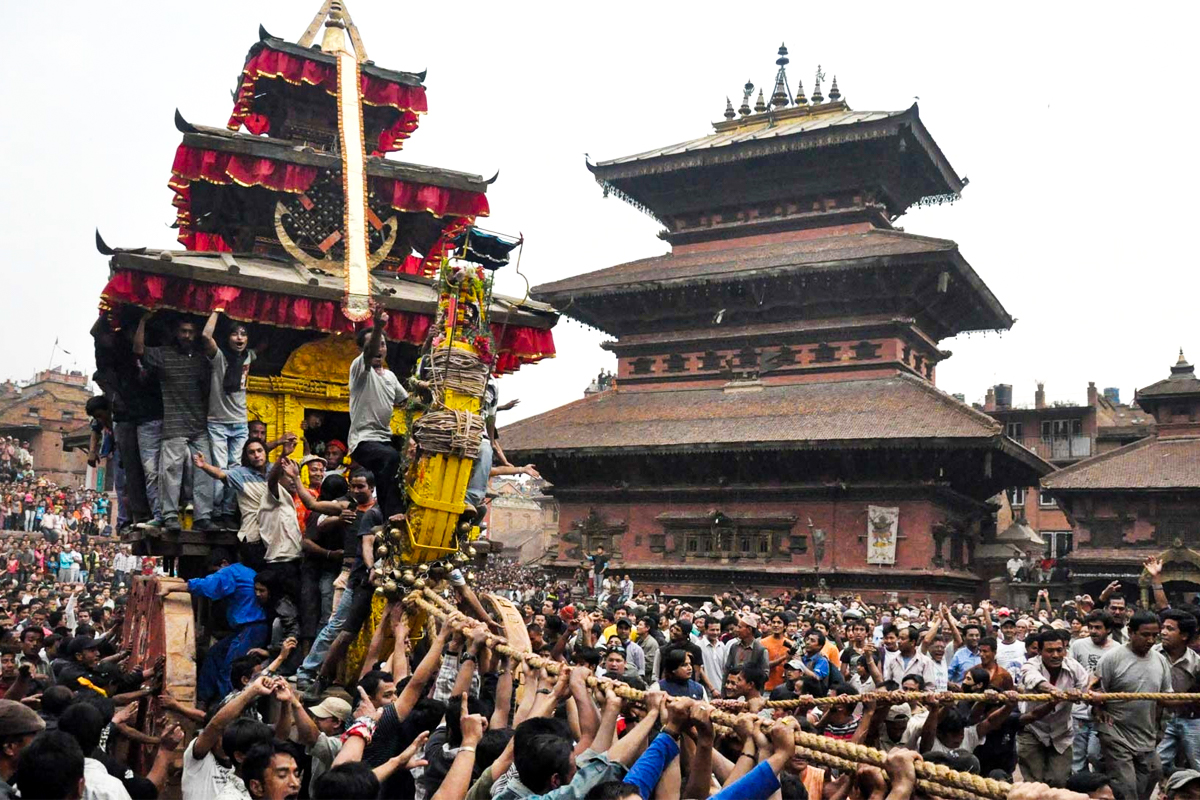
- Go for Trekking in the Himalayas: Embark on an unforgettable journey through the stunning landscapes of Nepal by booking a trekking adventure during the Nepali New Year. Traverse through picturesque villages nestled amidst verdant valleys, where you'll encounter the warm hospitality of the local communities. Along the way, you'll have the opportunity to experience the unique cultural festivities of the Nepali New Year, as you encounter vibrant celebrations in remote mountain villages. Whether you're a seasoned trekker or a beginner, a trekking expedition during the Nepali New Year promises to be an enriching and life-changing experience, offering moments of serenity, self-discovery, and cultural immersion amidst the awe-inspiring landscapes of Nepal. For a detailed blog on trekking destinations during New Year, visit here.
You can also Experience the fascinating festival vibes in various corners of the Kathmandu Valley:
- Tug of War at Bhaktapur: Tug of War, known locally as "Dhauju" or "Dhime Bazar", is a spirited competition that symbolizes strength and unity. Teams from different communities engage in friendly yet fiercely competitive matches, pulling at opposite ends of a rope. This traditional game not only serves as a source of entertainment but also fosters camaraderie and teamwork among participants and spectators alike.
- Sindoor Jatra in Thimi: Sindoor Jatra, also known as the "Vermilion Powder Festival," is an integral part of the Nepali New Year celebrations, particularly in Bhaktapur. During this vibrant procession, locals clad in traditional attire carry palanquins adorned with the deity of Lord Bhairab. They traverse through the streets, spreading joy and tossing vermilion powder (sindoor) into the air, symbolizing the triumph of good over evil and the arrival of prosperity and happiness in the new year.
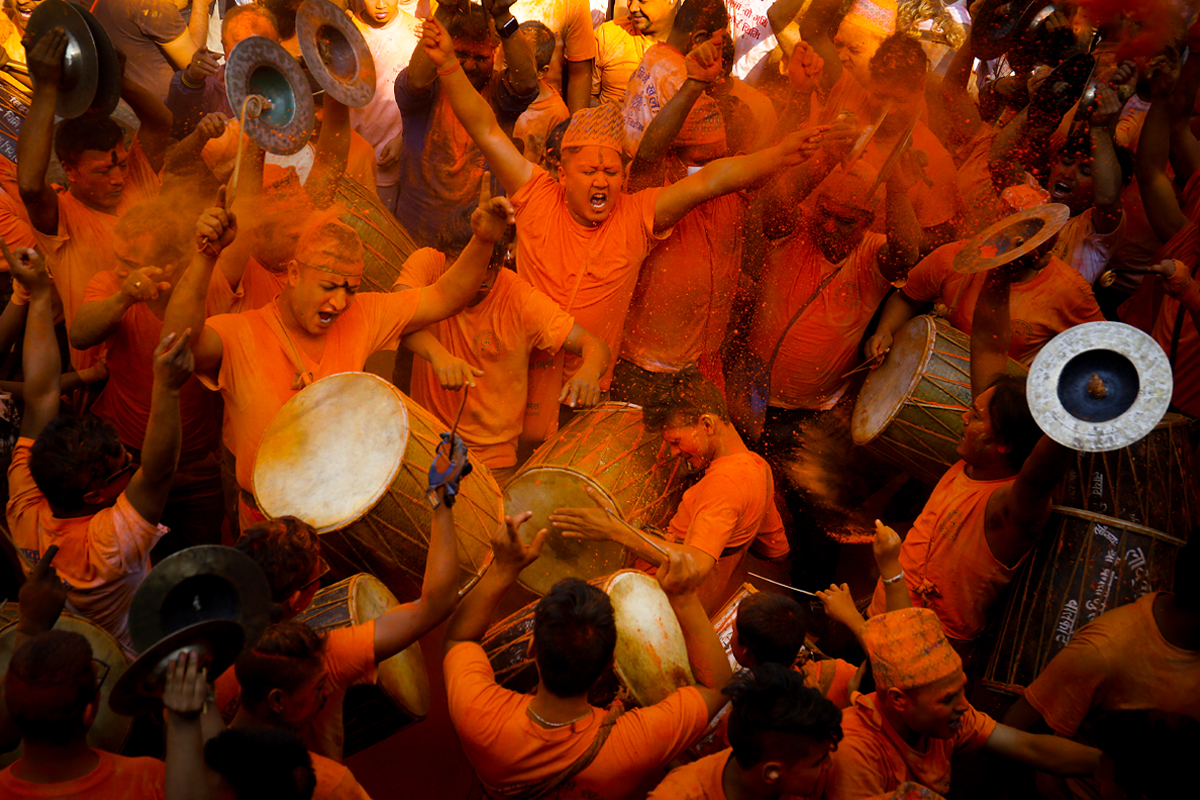
- Lingdo Pulling: Lingdo Pulling is a unique tradition observed primarily in the Bhaktapur district during the Nepali New Year. In this exhilarating ritual, devotees gather to pull a massive wooden pole known as the "lingdo" or "yosin." The objective is to erect the lingdo vertically, signifying the triumph of life over death and the renewal of spiritual energy. This ancient practice underscores the significance of communal effort and the resilience of the human spirit.
- Tongue Piercing: Tongue piercing, or "Bunge Dyo," is a daring ritual practiced by devotees, particularly in the Bhaktapur and Lalitpur districts, during the Nepali New Year festivities. Participants, often in a trance-like state, undergo the piercing of their tongues with sharp objects, such as skewers or metal rods. This act of self-sacrifice is believed to demonstrate devotion to the deities and cleanse the soul of impurities, ushering in blessings and prosperity for the new year. Despite its intense nature, tongue piercing is regarded as a deeply spiritual and transformative experience by those who partake in it.
Delicacies During New Year in Nepal
Indulge in the flavors of Nepal during the New Year celebrations by sampling a variety of traditional delicacies. From savory dishes to sweet treats, Nepal offers a culinary experience for your unique taste buds. Here are some must-try delicacies during the Nepali New Year:
- Sel Roti: A traditional Nepali rice flour donut, crispy on the outside and soft on the inside. Enjoyed as a breakfast treat or snack, Sel Roti is often paired with yogurt or tea.
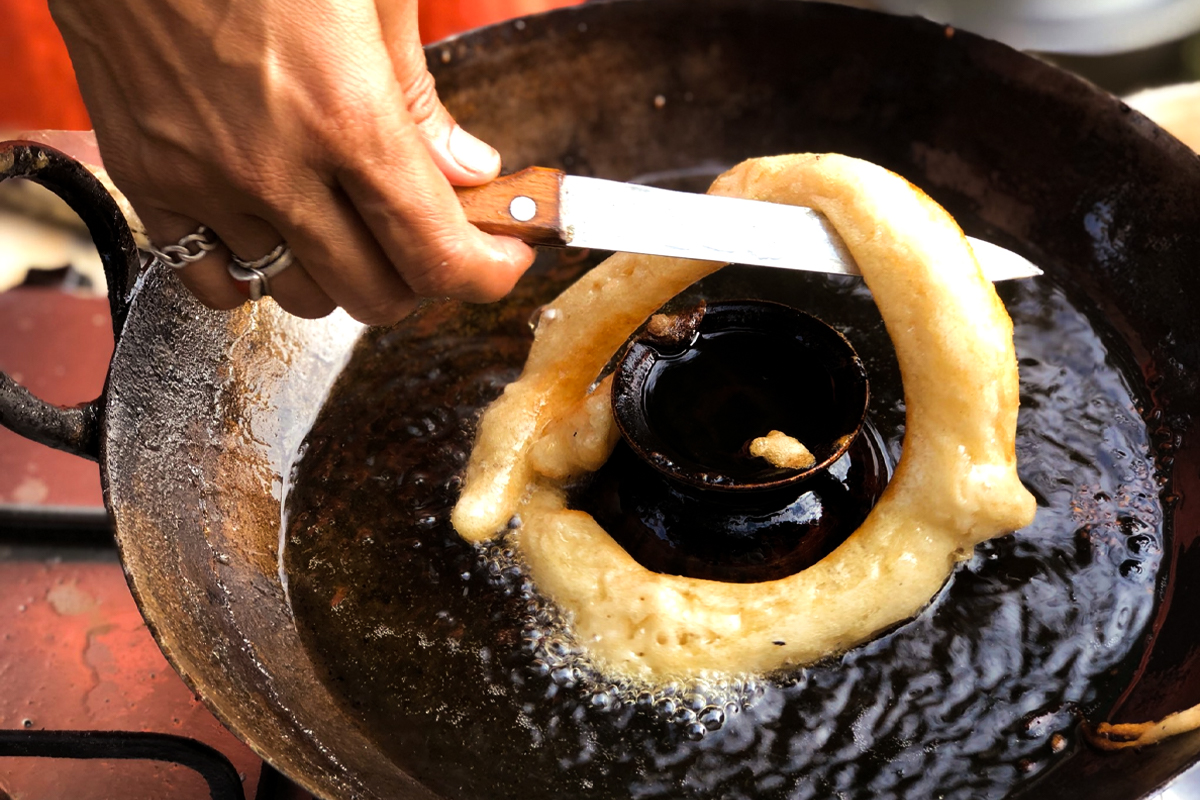
- Gundruk: A fermented leafy green vegetable, Gundruk is a popular side dish in Nepali cuisine. Rich in flavor and nutrition, it is often served with rice or lentil soup (dal).
- Yomari: A sweet dumpling made from rice flour dough and filled with a mixture of sesame seeds, molasses, and spices. Yomari is a specialty dish enjoyed during festive occasions, including the Nepali New Year.

- Kasaar: A crispy, deep-fried snack made from rice flour and sugar. Kasaar is a favorite sweet treat among Nepali households during the New Year celebrations.
- Sekuwa: Tender pieces of marinated meat, grilled to perfection over an open flame. Sekuwa is a popular street food in Nepal, enjoyed by locals and tourists alike during festive occasions.
- Aloo Tama: A savory curry made from potatoes (aloo) and bamboo shoots (Tama), cooked in a flavorful blend of spices. Aloo Tama is a hearty and satisfying dish often enjoyed with rice or flatbread.
Experience the rich culinary heritage of Nepal during the Nepali New Year and savor the delicious flavors of these traditional delicacies.
Practical tips for travelers during Nepali New Year
- Plan your transportation in advance as roads may be congested during festivities. Consider hiring a local guide or using reliable transportation services.
- Book accommodations early as hotels and guesthouses may fill up quickly. Look for options that offer easy access to celebration venues.
- Be cautious in crowded areas and keep your belongings secure. Stay hydrated and follow local safety guidelines, especially during public events.
- Immerse yourself in the local culture by participating in traditional rituals and attending cultural events. Visit temples, join festive processions, and try local cuisine for an authentic experience.
- While the Nepali Cuisines are delicious, always be cautious about what you eat and drink to avoid foodborne illnesses. Stick to reputable restaurants and avoid consuming tap water unless it has been properly treated or boiled.
- It is important that you familiarize yourself with local laws and customs, and ensure that your behavior aligns with them. For example, avoid public displays of affection, especially in more conservative areas, and be mindful of cultural sensitivities when taking photographs, always ask for permission before taking photos, especially of individuals.
- When engaging in activities like trekking or sightseeing tours, use licensed guides and local tour operators who are knowledgeable about the area and can ensure your safety.

At the end
Ultimately, the Nepali New Year holds a special significance for the people of Nepal, as it marks a time of renewal, hope, and celebration. Across the country, individuals from diverse backgrounds come together to usher in the new year with anticipation for positive change, abundant opportunities, and enduring happiness in the days ahead. As communities unite in festive spirit, the Nepali New Year serves as a beacon of optimism and cultural pride, embodying the enduring spirit of resilience and unity that defines Nepal's rich heritage.
So, If you want to experience the vibrancy of the Nepali New Year firsthand, we invite you to contact us. Our team is dedicated to customize unforgettable cultural experiences that immerse you in the heart of Nepal's traditions and celebrations. Join us as we journey through this joyous festival, colorful processions, and sacred temples, embracing the joy and fellowship of this auspicious occasion. Let us be your guide as you create cherished memories and forge meaningful connections in the land of the Himalayas.










